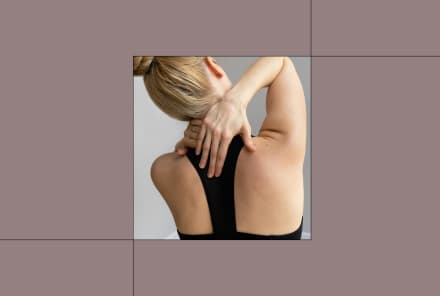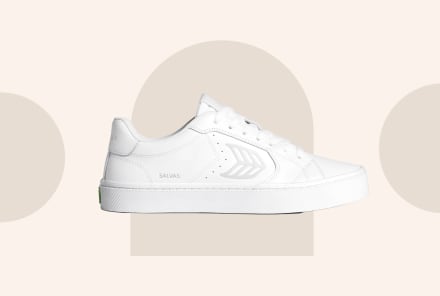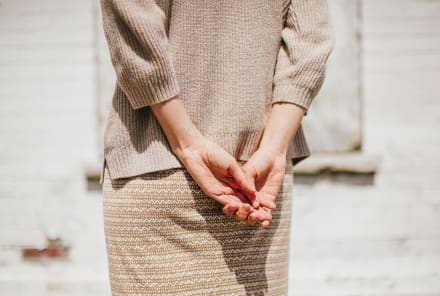Advertisement
5 Yoga Poses That Will Get Rid Of Lower Back Pain — For Good

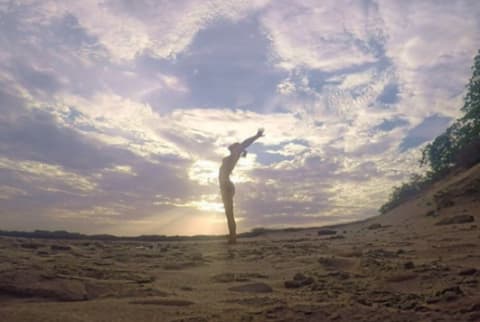
Whether your lower back pain stems from an injury or is simply caused by sitting too much, an aching back can put a serious cramp in your style.
Here's the good news, though: You don't have to live with lower back pain. If you spend some quality time with your yoga mat, you'll probably find that those aches and pains don't stand a chance.
But between all the downward-facing dogs and chaturangas, it can be hard to figure out which poses specifically target your lower back. Which is why we spent some time with Sara Quiriconi, who gave us the lowdown on using yoga to ease lower back pain.
Here are five poses that will get rid of your lower back pain:
1. Cat/cow
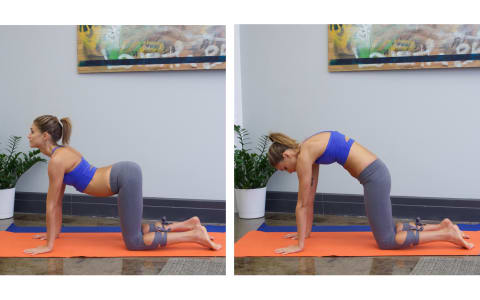
The perfect set of complementary poses and approachable for all levels, cat/cow movements liquefy the spine, loosening all of the back muscles. Cat and cow can be used as part of your yoga practice, alone if you have time for only one posture, or as a warmup for another fitness routine.
Repeat 5 to 10 rounds, or more as desired.
Pro tip: If you have any sensitivity in your wrists, use fists instead, stacked directly underneath the shoulders.
2. Extended tabletop (with knee-to-elbow core work)
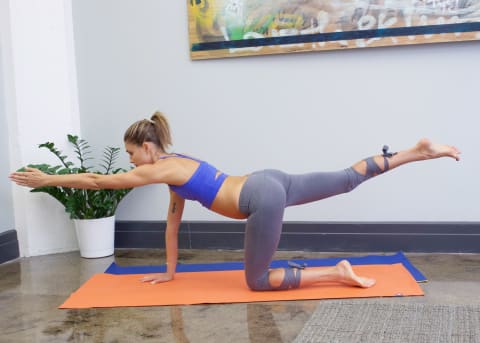
This one works double time, strengthening the erector muscles that run along the entire length of the spine and your core at the same time. A strong set of core muscles—particularly the deepest muscles of the abdomen, the transverse abdominals—are pertinent to a healthy posture and spine, creating solid support in an area of your body that has the least bone structure surrounding it.
Pro tip: Move slowly in the transitions of the extensions and flexions to create greater awareness of the muscles at work and for stability.
3. Kneeling twist.
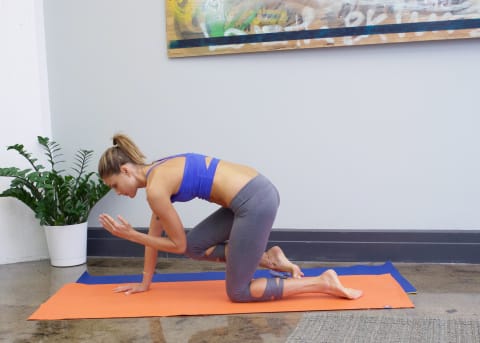
After all of that strengthening, we've now warmed up the lower back to access the muscles and allow them to open. The twist in the posture provides space to open the rectangular-shaped group of muscles in the mid- to low-back called the quadrates lumborum, which originate at the base of the rib cage and connect to the tip of the pelvis. Without getting too anatomical, let's just say these muscles get very tight from sitting too long or suffer from poor posture.
Pro tip: Place a block between your feet as you're twisting if you notice your feet shifting.
4. Lunge with side bend
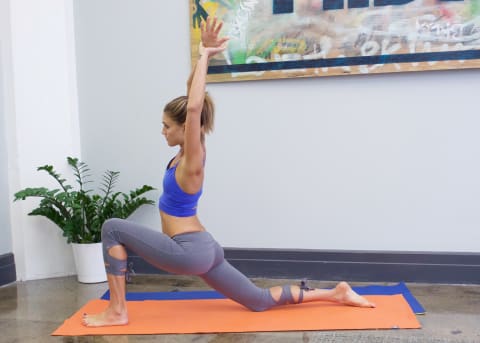
In addition to tight back muscles, sitting for long hours and poor posture can also lead to tight hip flexors, which are the group of muscles that lift your knee to your torso. Prone to being tight and short, hip flexors attach to your femur bone, pelvis, and the lumbar spine.
Lunges with a side bend help to lengthen and open short and/or tight hip flexors. As important as it is to strengthen them, as we did in posture set No. 2, it's equally important to create a healthy range of motion for this vital group of muscles we use for everyday activities.
Pro tip: If there is any sensitivity of the knee, place a towel or pillow beneath the knee that is lowered. Another option for the side bend is to place one hand at the hip while the other arm extends overhead for a modified version.
5. Seated side bend
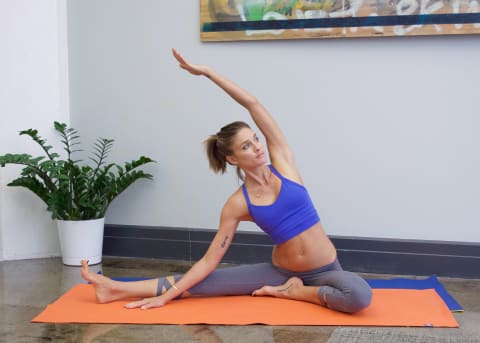
Along with tight QL muscles (see No. 3 for reference), tight or limited hip muscles and glutes can play a large role in lower back pain. This side bend opens all three sets of muscle groups when done correctly. Keeping both of the sitz bones rooted on the ground, stacking ribs and shoulders one over the other, it's crucial to note this posture is a side bend and not a forward fold. There's no goal of reaching the toes! So relax, breathe, and enjoy the long journey and opening on this one.
Pro tip: If you find your butt lifting off the ground or a tendency for your low back to round, prop yourself up on a block or pillow to elevate the hips a bit and/or bend the extended leg's knee.
Watch Next
Enjoy some of our favorite clips from classes
Enjoy some of our favorite clips from classes
What Is Meditation?
Mindfulness/Spirituality | Light Watkins
Box Breathing
Mindfulness/Spirituality | Gwen Dittmar
What Breathwork Can Address
Mindfulness/Spirituality | Gwen Dittmar
The 8 Limbs of Yoga - What is Asana?
Yoga | Caley Alyssa
Two Standing Postures to Open Up Tight Hips
Yoga | Caley Alyssa
How Plants Can Optimize Athletic Performance
Nutrition | Rich Roll
What to Eat Before a Workout
Nutrition | Rich Roll
How Ayurveda Helps Us Navigate Modern Life
Nutrition | Sahara Rose
Messages About Love & Relationships
Love & Relationships | Esther Perel
Love Languages
Love & Relationships | Esther Perel
